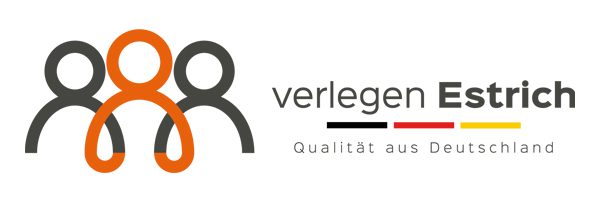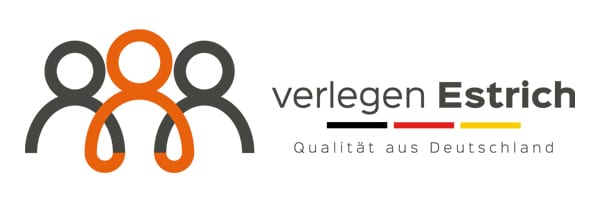FAQs
Most frequently asked questions
The flatness tolerance is a regulation defined in DIN18202. It covers the maximum deviation from flatness and angle tolerances for professionally installed floors, ceilings and walls. As a specialist installer of underfloor heating systems, we naturally comply with these legal regulations and implement them in every project.
Screed is a compound that is used for the construction of floors. The mixture, which is usually based on concrete, is poured onto the unfinished floor in a liquid state as a base for the future floor covering and specially hardened. It is primarily used for sound and heat insulation and can be supplemented with underfloor heating.
The basic philosophy of our studio is to create individual, aesthetically impressive solutions for our clients by developing projects in unique styles at lightning speed.
Cement screed is generally used in residential buildings. In addition to cement screed, there are four other types of screed:
- Calcium sulphate screed
- Mastic asphalt screed
- Synthetic resin screed
- Magnesia screed
The type of screed varies depending on use, load and surface size.
Most builders prefer to use cement screed for the basement. This is particularly inexpensive and robust. Please note that special heaters and dryers are usually required for installation in the basement. These rooms are usually cold and poorly ventilated, which is why the installation should always be carried out by a specialist. We would be happy to provide you with a personal quote!
The dry screed is particularly suitable for laying on a wooden beam ceiling, as it has a low dead weight. When using it, you also benefit from a short installation time and a low installation height.
Composite screeds are used to withstand the weather and loads in a garage. These are cement screeds or mastic asphalt screeds, which are particularly resilient. As specialists in our field, we regularly work for companies and private individuals. Feel free to contact us at any time!
Expansion joints are used wherever the screed is interrupted by other objects. This includes walls, fittings, doors, pipes and all other objects. To set expansion joints correctly, you need specialist knowledge and experience. As a specialist company for screed laying, we are happy to offer you our support!
The cost of laying screed varies depending on the size of the room, the screed's features and the type of screed. In general, prices start at around 18 euros per square meter and vary depending on the size of the area.
Screed is used as a subfloor almost everywhere - whether outside or inside. Only in old houses with wooden beam ceilings is there usually no screed, although this can be retrofitted. Dry screed is suitable for renovating old properties with wooden beam ceilings, as it is particularly light and requires a low installation height.
If it is a heated screed, i.e. underfloor heating is integrated, heating is mandatory. Although a heating schedule is not prescribed for normal screed, it is still highly recommended. Fluctuating temperature and humidity can cause the screed to contract or expand. To prevent the resulting cracks, the screed must be heated professionally. This is the only way to benefit from its durability and avoid structural damage. It's best to trust the professionals here and contact us for a no-obligation consultation!
The separating layer protects the screed from moisture, improves insulation and allows it extensive freedom of movement. This allows the screed to expand or contract with temperature fluctuations, which prevents cracks, stresses and other damage.
After laying, wet screed must rest for at least 3 days and must not be exposed to any loads. In general, screed should not be walked on until it is ready for covering, which is usually after 7 to 21 days. Dry screed is an exception and can be fully loaded immediately after successful installation.
Depending on the damage, the screed can be repaired. Repair is always preferred if possible, as removing the screed and reinstalling it is very time-consuming and cost-intensive. Damage to the screed should be repaired as quickly as possible by a specialist company before it spreads and causes lasting damage to the building fabric.
Underfloor heating can also be installed or retrofitted in old buildings. Thin-layer screed and dry screed are particularly suitable for this, as they have a particularly low installation height. If you are considering installation on a wooden beam ceiling, dry screed is the better choice as it is not only particularly thin at 30 mm, but also particularly light.
To improve the sound and heat insulation of a room, construction companies use floating screed. With this method, the screed is separated from the unfinished floor by a special separating layer. Contact with walls is also prevented by special edge insulation strips, giving the screed more room to move and better insulation.
Theoretically, you can lay screed yourself. However, we recommend calling in a specialist tradesman, as attention must be paid to expansion joints, insulation and drying during installation. Failure to do so can result in serious structural damage and expensive repairs. We have been working in the field of screed laying for over 30 years, contact us and save yourself the trouble!
The basic philosophy of our studio is to create individual, aesthetically impressive solutions for our clients by developing projects in unique styles at lightning speed.
Ventilation is essential when laying screed, as the moisture content in the screed may only be a few percent for the screed to be ready for covering. Care must be taken to ensure a constant room temperature and sufficient ventilation.
The thin-layer screed is the ideal choice for existing buildings with low ceilings, as the installation height of 3.5 to 4.5 cm means that the room is practically not reduced in size. The installation of thin-layer screed is also possible in combination with underfloor heating. Simply contact us and you too can benefit from the pleasant and healthy radiant heat!
Cement screed is usually used for wet areas as it is stable, water-repellent and inexpensive to install. When used in the shower, it is important to ensure a slope so that the waste water does not accumulate and mold does not form. We will be happy to help you plan your new bathroom - simply get in touch with our customer advisors!
If you want to install underfloor heating, a so-called heating screed is used. This is particularly robust and is characterized by high thermal conductivity. For particularly low ceilings, a special thin-layer screed or a dry system underfloor heating can also be installed.
The use of rapid screed ensures a particularly fast drying time. However, there is a heating schedule for each type of screed that must be taken into account. Only by achieving a minimum moisture content is it possible to achieve readiness for covering, which in turn is required for laying the floor covering.
If it is a heated screed, i.e. underfloor heating is integrated, heating is mandatory. Although a heating schedule is not prescribed for normal screed, it is still highly recommended. Fluctuating temperature and humidity can cause the screed to contract or expand. To prevent the resulting cracks, the screed must be heated professionally. This is the only way to benefit from its durability and avoid structural damage. It's best to trust the professionals here and contact us for a no-obligation consultation!
Screed laying undoubtedly belongs in the hands of a professional. Most hobby craftsmen will be overwhelmed when it comes to choosing the right type of screed. In addition, certain tolerances and values must be met and expansion joints planned. If you want to install underfloor heating, there are even more requirements to fulfill. Our specialist company has been specializing in the installation of screed for over 30 years. Feel free to contact our customer service team and let us provide you with a suitable quote!
All floor coverings can be laid on screed. It is advisable to use thermally conductive floor coverings if you want to install underfloor heating. Tiles and natural stone conduct heat particularly efficiently, allowing you to benefit as much as possible from your underfloor heating.
The removal of screed is extremely time-consuming and should only be carried out by professionals. The cost of screed removal usually starts at 40 euros and varies depending on the area and type of screed.
Screed acts as a subfloor and primarily levels out unevenness. Screed also provides better sound and heat insulation, which is particularly useful on the first floor. In old buildings, the screed layer is sometimes completely missing, which is characterized by high heat loss. This can be compensated for quickly and cost-effectively by installing thin-layer screed or dry screed. Simply contact us and we will be happy to make you an individual offer!
A retrofitted underfloor heating system is in no way inferior to an existing one. Quite the opposite: by retrofitting underfloor heating, you improve the indoor climate in the long term and do something good for your health. The radiant heat feels particularly pleasant and does not swirl the air - a clear plus for allergy sufferers. In addition, underfloor heating warms the room more efficiently, allowing you to save on heating costs in the long term. If you are interested in a professional installation, we look forward to hearing from you!
Get a quote from a qualified screed layer now
Our screed layers offer high-quality screed work as part of professional screed laying.

Choose your perfect plan
Basic Plan
€ 29
per m2
- Structure of a project
- Measuring the room
- 3D visualization of the premises
- Dismantling plan
- Scheme of the interior fittings
- Floor plan & ceiling structure
ultra plan
€ 39
per m2
- Structure of a project
- Measuring the room
- 3D visualization of the premises
- Dismantling plan
- Scheme of the interior fittings
- Floor plan & ceiling structure
maxi plan
€ 49
per m2
- Structure of a project
- Measuring the room
- 3D visualization of the premises
- Dismantling plan
- Scheme of the interior fittings
- Floor plan & ceiling structure


